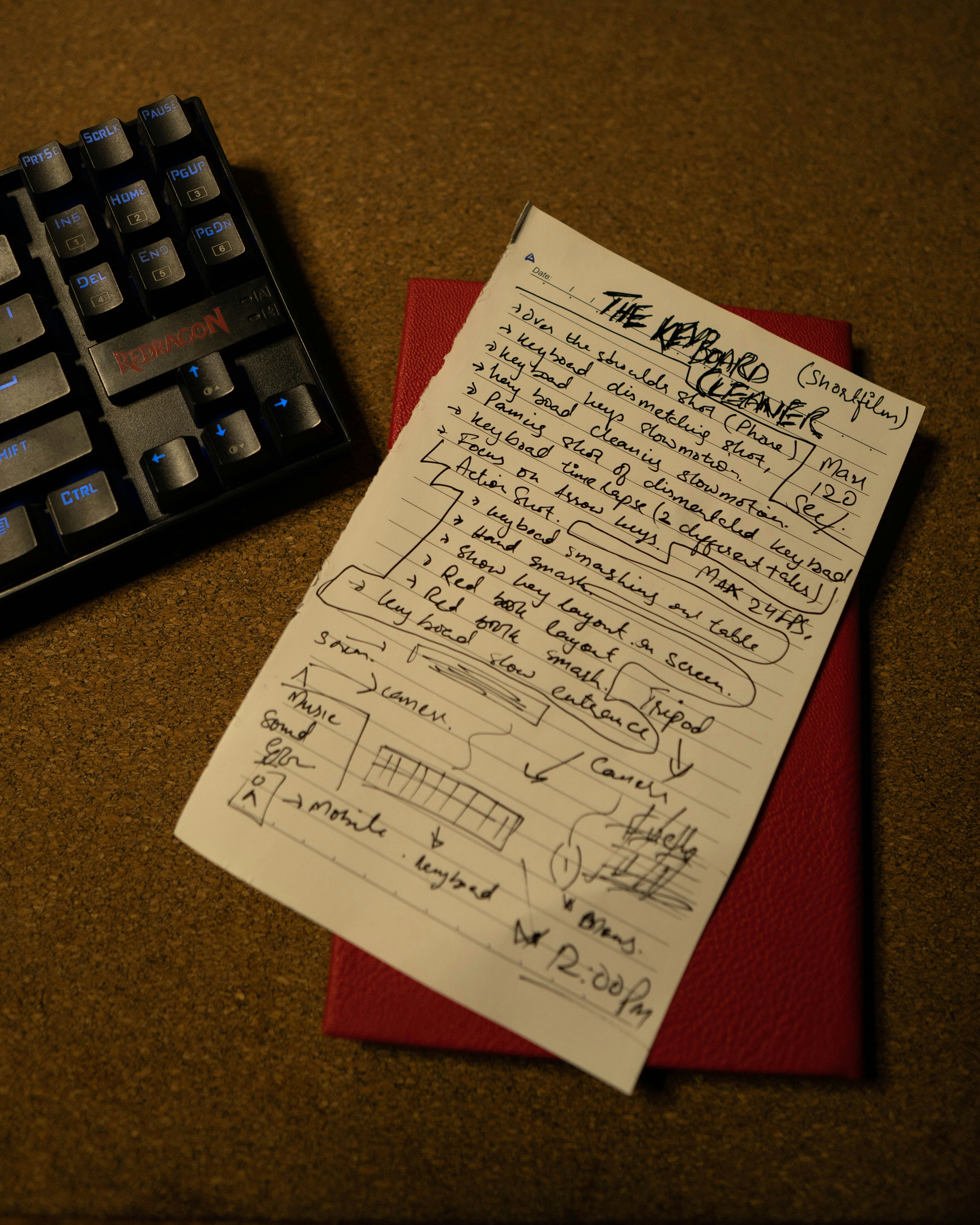Crafting Cinemas: Filmmaking and Script Writing
August 30, 2024 | by vinayras@gmail.com
 Photo by Adeel Shabir on Unsplash
Photo by Adeel Shabir on Unsplash The Art of Filmmaking: Techniques and Tips
Filmmaking is a multifaceted art form that merges various techniques and elements to create compelling narratives on screen. Fundamental to this process is the mastery of camera work. The choice of camera angles, shot sizes, and movements can profoundly influence the audience’s perception and emotional connection to the story. For instance, close-up shots can express intense emotion, while wide shots can establish context and setting. Aspiring filmmakers might benefit from experimenting with different lenses and perspectives to discover their unique visual style.
Equally crucial is lighting, which can set the mood and tone of a scene. Proper lighting techniques involve understanding the interplay between shadow and light to create depth and dimension. Simple setups like the three-point lighting system—key light, fill light, and backlight—are foundational for achieving professional-quality visuals. Additionally, natural lighting can be harnessed to enhance realism, though it requires meticulous planning to effectively utilize its dynamic nature.
Sound design is another pivotal aspect, often underappreciated in its impact. High-quality audio recording, sound effects, Foley, and background scores collaborate to enrich the narrative. Incorporating diegetic and non-diegetic sounds can significantly elevate the storytelling, immersing the audience in the film’s universe. Beginners should prioritize acquiring good sound equipment and investing time in post-production sound editing to refine their audio tracks.
In post-production, editing serves as the cohesive glue that binds the visual and auditory components. The pacing of cuts, transitions, and special effects must align with the narrative flow to maintain audience engagement. Tools like Adobe Premiere Pro or Final Cut Pro offer extensive capabilities for editors to polish their craft, transforming raw footage into a seamless story.
Pre-production planning cannot be overstated. Detailed storyboards, comprehensive location scouting, and realistic budgeting form the backbone of any successful film project. Storyboarding allows filmmakers to visually map out their scenes, ensuring clarity and efficiency during shoots. Location scouting ensures that the settings align with the script’s vision, while budgeting helps in resource management, keeping the project financially viable.
Gleaning insights from industry veterans can also be immensely beneficial. Filmmakers like Alfred Hitchcock and Christopher Nolan offer a treasure trove of knowledge through their masterful use of suspense and nonlinear storytelling. Observing and analyzing their techniques can inspire both novices and experts to elevate their filmmaking prowess.
Mastering Script Writing: Crafting Compelling Stories
Script writing stands as the backbone of any film, a critical component that transforms a simple idea into a cinematic masterpiece. To begin this journey, writers need to grasp the fundamentals of script structure. Typically, scripts follow a three-act structure: the setup, the confrontation, and the resolution. Mastering this architecture is paramount, as it provides a blueprint for pacing and plot progression.
Character development is equally vital. Crafting multidimensional characters who evolve throughout the narrative is essential. Writers should strive for authenticity, ensuring that character arcs are clear and impactful. This involves deep diving into the character’s backstory, motivations, and relationships, which in turn, garners audience empathy and investment in the story.
Dialogue writing is another cornerstone of a stellar script. Authentic dialogue breathes life into characters and enhances believability. It’s crucial to write dialogue that reflects the individual character’s voice, background, and circumstances while still moving the plot forward. This authenticity helps in creating a strong connection with the audience.
Pacing, the rhythm of the narrative, influences how the story unfolds and how the audience experiences it. Balancing scenes of high tension with moments of introspection can keep audiences engaged and invested. Effective pacing requires meticulous planning and often, several revisions.
Understanding genres is additionally essential in script writing. Each genre comes with its own conventions and audience expectations. Writers should familiarize themselves with these norms to either adhere to them or subvert them creatively. A horror script, for instance, will differ vastly from a romantic comedy in tone, style, and structure.
To develop unique plots, one practical approach is combining familiar elements in fresh ways. Drawing inspiration from real-life experiences and universal themes can result in a compelling narrative. Consulting industry experts and analyzing successful scripts can provide invaluable insights into what works and why. These professionals often share their tricks of the trade, revealing nuances that can elevate a script from good to great.
In essence, mastering script writing involves a blend of creativity and technique. It empowers writers to produce scripts that are not only original but also marketable, capable of resonating with audiences and standing out in the competitive world of filmmaking.
RELATED POSTS
View all
